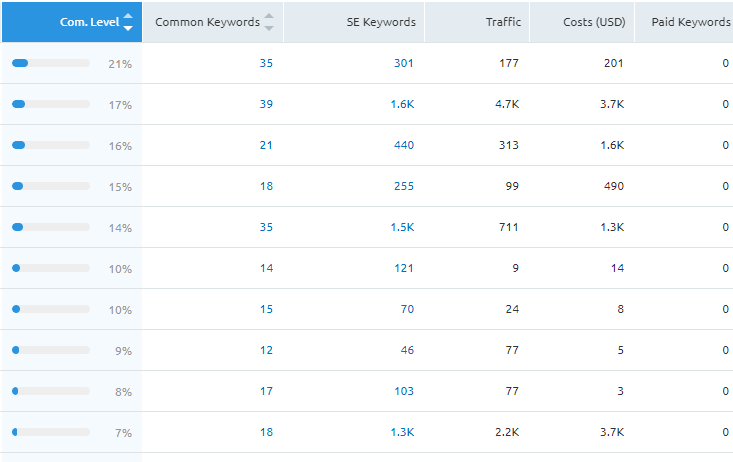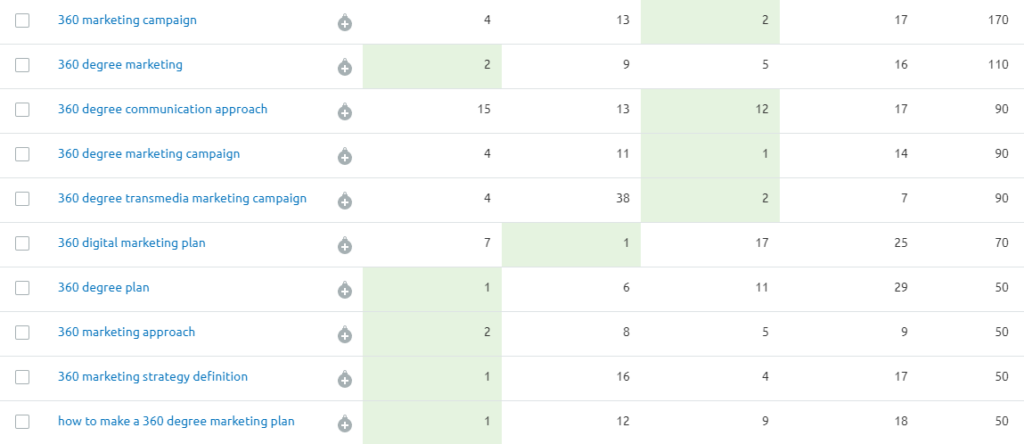
How (and Why) B2Bs Should Conduct SEO Competitive Analysis
What if you could reverse engineer your competitors’ successes on the SEO front and discover what they’re doing to get better rankings than you? The good news is you can. It’s simply a matter of conducting SEO competitive analysis.
Let’s take a closer look at what this type of analysis entails, why it’s beneficial (as if it weren’t already obvious), and how to go about it…
What Is SEO Competitive Analysis & Why Do It?
SEO competitive analysis is a type of research that allows you to look at what is and isn’t working for your competition when it comes to search engine optimization (SEO). That way, you can develop a solid SEO strategy to help you rank above them in the search engine results pages (SERPs).
This type of research involves looking at your competitors’ results and trying to analyze what led them there. To do that, you need to review keywords, links, content, and the technical aspects of their websites.
There are many reasons to do an analysis like this, but the main ones are to…
- Achieve higher rankings
- Bring in more traffic
- Generate more conversions
By doing an SEO competitive analysis, you’ll discover who your SEO competitors are, what keywords they are targeting, what content they are publishing, and where they are getting their backlinks from.
It allows you to identify your strengths and weaknesses, as well as your competition’s. Then, you can improve on your weaknesses and capitalize on the weaknesses of your competition, filling in the gaps.
Without doing this type of work, you’re going about your marketing haphazardly. You might get lucky and rank above your competition, but then again, you might not (and probably won’t).
How to Conduct an SEO Competitive Analysis
So, it’s obviously to your advantage to do an SEO competitive analysis. But how should you go about it?
Here are the key steps…
1) Identify Your True SEO Competitors
If you’re not comparing the right competitors, doing this work is a waste of time. So, you have to get this part right. You need to start by identifying your search competitors, which are likely different than your non-search competitors.
Fortunately, finding your true SEO competitors is relatively easy. A good practice is to simply search your target keywords and look at what companies come up.
However, to get the best results from your SEO competitive analysis, we recommend using a tool like Semrush (which we’ll highlight moving forward). They have a Competitive Research Toolkit that makes it easy to conduct organic research. It allows you to discover what domains you’re competing against, what keyword strategies they’re using, and more.

2) Do Keyword Research
Once you find your true SEO competitors, it’s time to look at keyword distribution.
Find the keywords that they are outranking you for and choose the ones that will make an impact on your SEO strategy. In particular, look at the keywords you aren’t ranking for, but your competitors are.
- Are they ranking for hundreds of keywords, but those keywords don’t have any search volume?
- How difficult is it to rank for the keywords they’re ranking for?
- How many keyword categories are they ranking for (how diverse is their strategy)?
- Why are they ranking for these keywords while you aren’t?
- Are they ranking better than you on long-tail keywords or “money” keywords?
Do this step for each competitor because you won’t have the same set of competitors for every keyword.

Caption: A look at how a B2B and its competitors compare in terms of keywords in Semrush.
3) Look for Content Gaps
Next up in the SEO competitive analysis is to take a look at your competition’s content marketing strategy and try to determine what content is winning them the most links.
Analyze your competition on a page-by-page basis and identify where there are gaps between your site and theirs. In particular, look at the following:
- What type of content are they focusing on (blogs, videos, podcasts, e-books, white papers, webinars)?
- How often are they publishing content?
- Are they getting a lot of featured snippets or “people also ask”?
- Which pages are ranking for the most keywords?
- Which pages are getting the most traffic?
You need to align with what they’re doing. Create the types of content they are creating. Publish more content than they are. Determine where you can add new pages to rank for additional keywords, etc.
4) Pinpoint Strengths & Weaknesses
Now, it’s time to start pulling out your strengths and weaknesses as well as your competitors’. Here, we can break things up into several categories so that it doesn’t feel so overwhelming…
Technical Aspects
Determine whether your competitors have any technical issues on their sites—specifically those that have a negative impact on search performance.
For example…
- Do they have a lot of 404 errors?
- Do they have a lot of duplicate content?
- Are they missing H1s?
Make sure that all the things they are missing are functioning well on your site. And then, move on to speed.
Site speed plays a critical role in SEO nowadays. Use Google PageSpeed Insights to compare your site speed with your competitors’. Reduce image sizes and adjust where you can. This is where it might make sense to hire a web developer.
Still to this day, many sites don’t function well on mobile, which can be a major hindrance to SEO. Browse around your site and your competitors’ sites to compare the mobile experience.
Content
You’ve already looked for content gaps in your SEO competitive analysis, but now you need to really dig in and determine where the strengths and weaknesses lie.
- What content is getting your competitors the most links?
- Do your competitors have mostly high-quality or low-quality links coming to their content?
- Do they have more domain authority than you do?
- Is their content high quality or mostly fluff?
- Do they have a blog or just service pages?
Find where they are lacking when it comes to content and create your own that improves upon that content. Create more comprehensive content and add data, visuals, missing info, videos, etc. Then, promote it to similar people.
E-Commerce
If you and your competitors engage in e-commerce, compare your product/service pages and theirs.
- Are their product/service descriptions high quality?
- Do they have some great how-to content?
- Do they have reviews and ratings displayed?
- Do they have suggestions for similar offerings?
- What is the user experience like for making a purchase?
Architecture
Another critical aspect of SEO is the internal linking structure and architecture of a website. Look at how your competitors have structured their sites and compare it to yours.
- What URL format are they using?
- Do they use breadcrumbs?
- Are they using anchor text that is varied?
- Do they have a well-thought-out internal linking strategy?
These issues can make it harder for Google to crawl a site properly, so make sure your architecture is on point and your internal linking is done as well as or better than your competition.
5) Look at Backlinks
Chances are you hear about backlinks all the time, but there’s a reason for it. They are an essential part of SEO because they indicate that people find your content valuable. Plus, it’s pretty hard to compete with websites that have a lot more links than you do.
First, look at where they are getting their links from and see if you can do the same. For example, are they getting a lot of press? If so, try to find your own media opportunities.
Look at new and lost backlinks for each of your competitors on Semrush. Do this for your site as well on a monthly basis. You can reach out to sites that have dropped your link in an effort to retrieve it, but not if you lost the link 6 months ago.
Make sure you’re getting different types of links. Even though Google doesn’t really count nofollow links (links with a special HTML tag that tells search engines to ignore that link), they still expect you to have some since a diverse range of links is more natural. Conversely, if all you have is nofollow links, it isn’t going to get you into Google’s good graces.

Final Thoughts
An SEO competitive analysis gives you a road map for your SEO, telling you what you need to improve to outrank your competitors. Remember, other B2Bs will likely be doing their own analysis, so don’t get complacent if you’re ranking well for your main keywords. Your spot could be taken over at any time.
(Want to know how your website is doing in terms of SEO and more? Click HERE to request a FREE website audit!)

